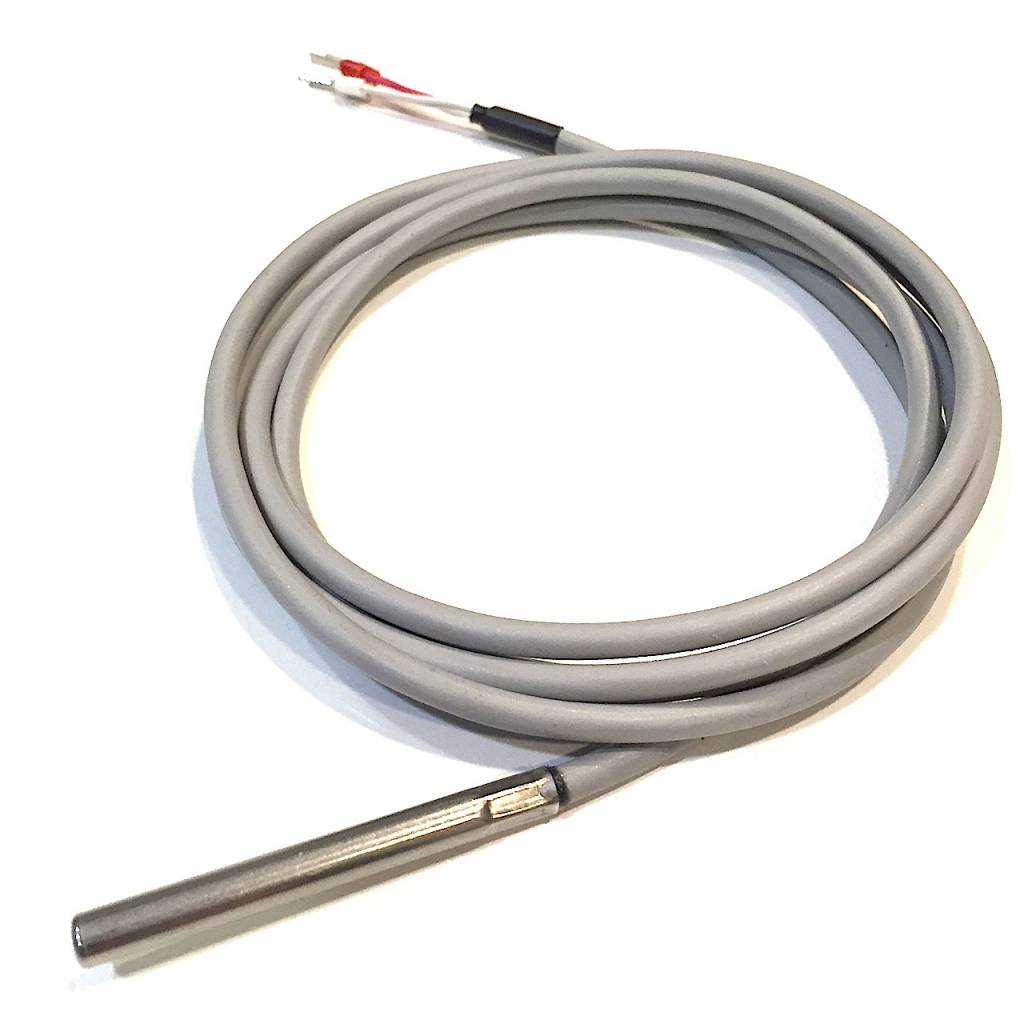 What are the differences between PT100 and PT1000
What are the differences between PT100 and PT1000 Many industries use RTD temperature sensors to measure temperature. Most of the sensors in most devices are PT100 or PT1000. These two temperature sensors have similar characteristics, but the difference between their nominal resistance may determine which one you choose for the application.
resistor temperature detector (RTD), also known as resistance thermometer , because of its reliability, accuracy, versatility, repetitiveness and easy installation, Become a popular temperature measurement equipment.
The basic principle of RTD temperature sensor is its wire sensor (made of metal with known resistance) with the increase in temperature or decreased to change its resistance. Although the resistance thermometer has certain limitations, including the maximum measurement temperature of about 600 ° C, in general, they are ideal temperature measurement solutions suitable for multiple processes.
Why use platinum sensors
The sensor lines in the temperature sensor can be made of nickel, copper or tungsten, but platinum (PT) is currently the most commonly used metal. It is more expensive than other materials, but there are several characteristics of platinum to make it particularly suitable for temperature measurement, including:
Almost linear temperature-resistance relationship
high resistivity (compared with 36 ω/cmf of nickel)
Establishing resistance over time
Excellent stability
Very good chemical passivation
High anti -pollution
The difference between
PT100 and PT1000 sensor
In the Platinum RTD temperature sensor, the most common is PT100 and PT1000. The nominal resistor of the PT100 sensor at the freezing point (0 ° C) is 100Ω. The nominal resistor of the PT1000 sensor at 0 ° C is 1,000Ω. The characteristic curve of the two is the same, the working temperature range and the response time are the same. The temperature coefficient of the resistance is also the same.
However, due to the different nominal resistors, the reading of the PT1000 temperature sensor is 10 times higher than the PT100 sensor. When comparing the 2 -line configuration, this difference becomes obvious, and the lead measurement error is applicable. For example, the measurement error of the PT100 may be +1.0 ° C, and in the same design, the measurement error of the PT1000 may be +0.1 ° C.
How to choose a suitable platinum temperature sensor
Both types of sensors are suitable for 3 and 4 configurations. Among them, additional wires and connectors compensate the effects of lead resistance on temperature measurement. The price of these two types is similar. However, the PT100 sensor is more popular than the PT1000. The reason is as follows:
The PT100 sensor adopts a winding and film structure to provide users with choice and flexibility. The PT1000 RTD always has only a thin film.
Since the use of Vilian PT100 RTD is widely used in various industries, they are compatible with various instruments and processes.
So why does anyone choose the PT1000 sensor? The following is a significant advantage of the larger nominal resistance:
PT1000 sensor is better when using the neutralization of the 2 -line configuration with a longer lead length. The less the number of wires, the longer the wire, the greater the resistance on the reading, which will cause inaccurate. PT1000 sensors greater nominal resistors compensate these increased errors.
PT1000 sensor is more suitable for battery power applications. A sensor with a higher standard is used as less current, so less power is required to run. Small power consumption can extend the life of battery life and maintenance interval, and reduce the time and cost of the downtime.
Because the PT1000 sensor uses less power, it is less self -heating. This means that there are fewer reading errors due to higher environmental temperatures.
Generally speaking, the PT100 temperature sensor is more common in process applications, while the PT1000 sensor is used for cooling, heating, ventilation, automotive and machine manufacturing applications.
Replace RTD: Instructions on Industrial Standards
RTD is easy to replace, but this is not a simple problem. The problem that users must pay attention to when replacing the existing PT100 and PT1000 sensors are regional or international standards.
The older standard specifies the temperature coefficient of platinum to 0.00392 ω/ω C (Ohm per degree of Celsius). In the newly used European/IEC 60751 standard, the standard is 0.00385 ω/ω C. This difference can be ignored at a lower temperature, but it becomes obvious at the boiling point (100 ° C). The old standard reading is 139.2Ω, and the new standard reading is 138.5Ω.

 What are the differences between PT100 and PT1000
What are the differences between PT100 and PT1000
